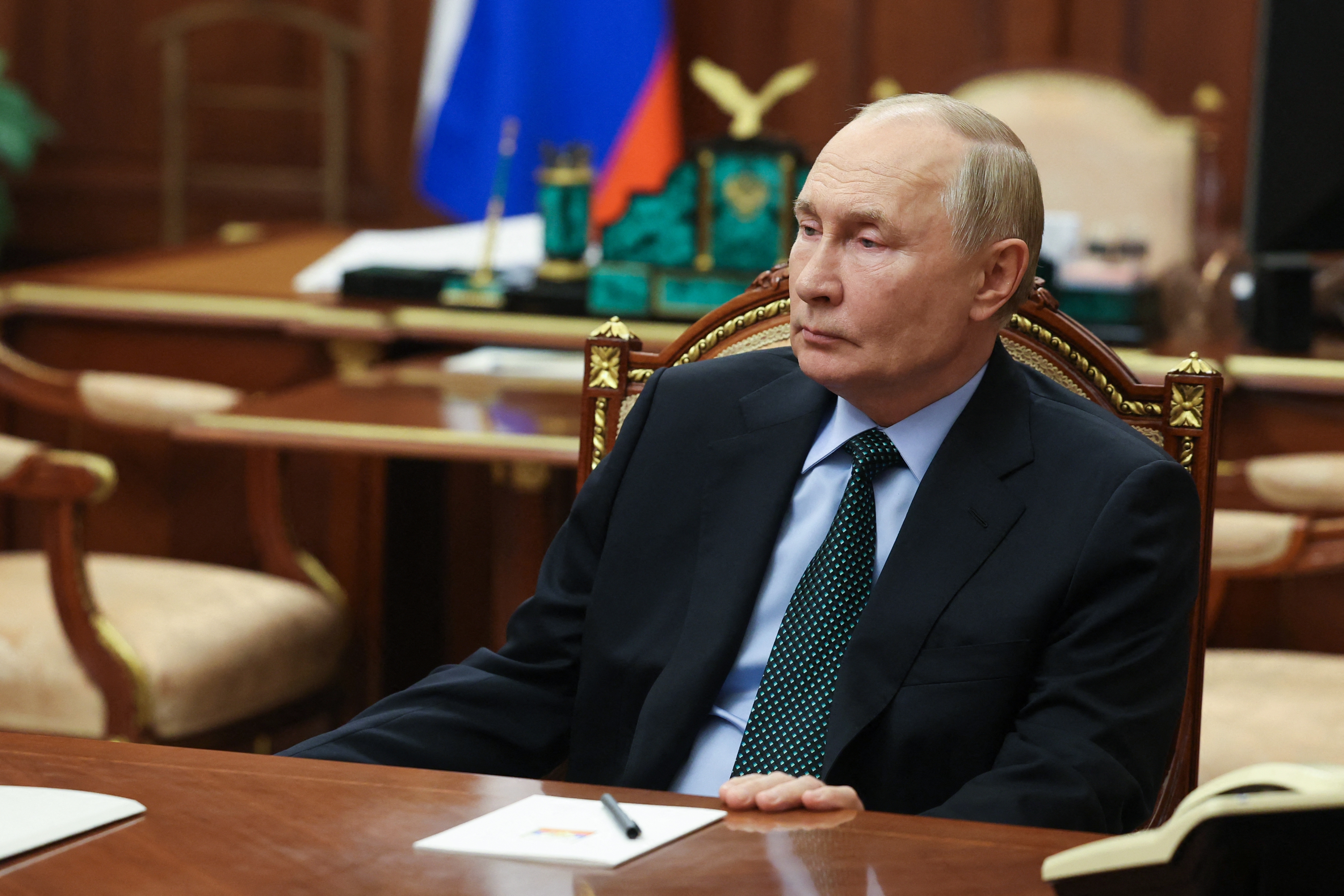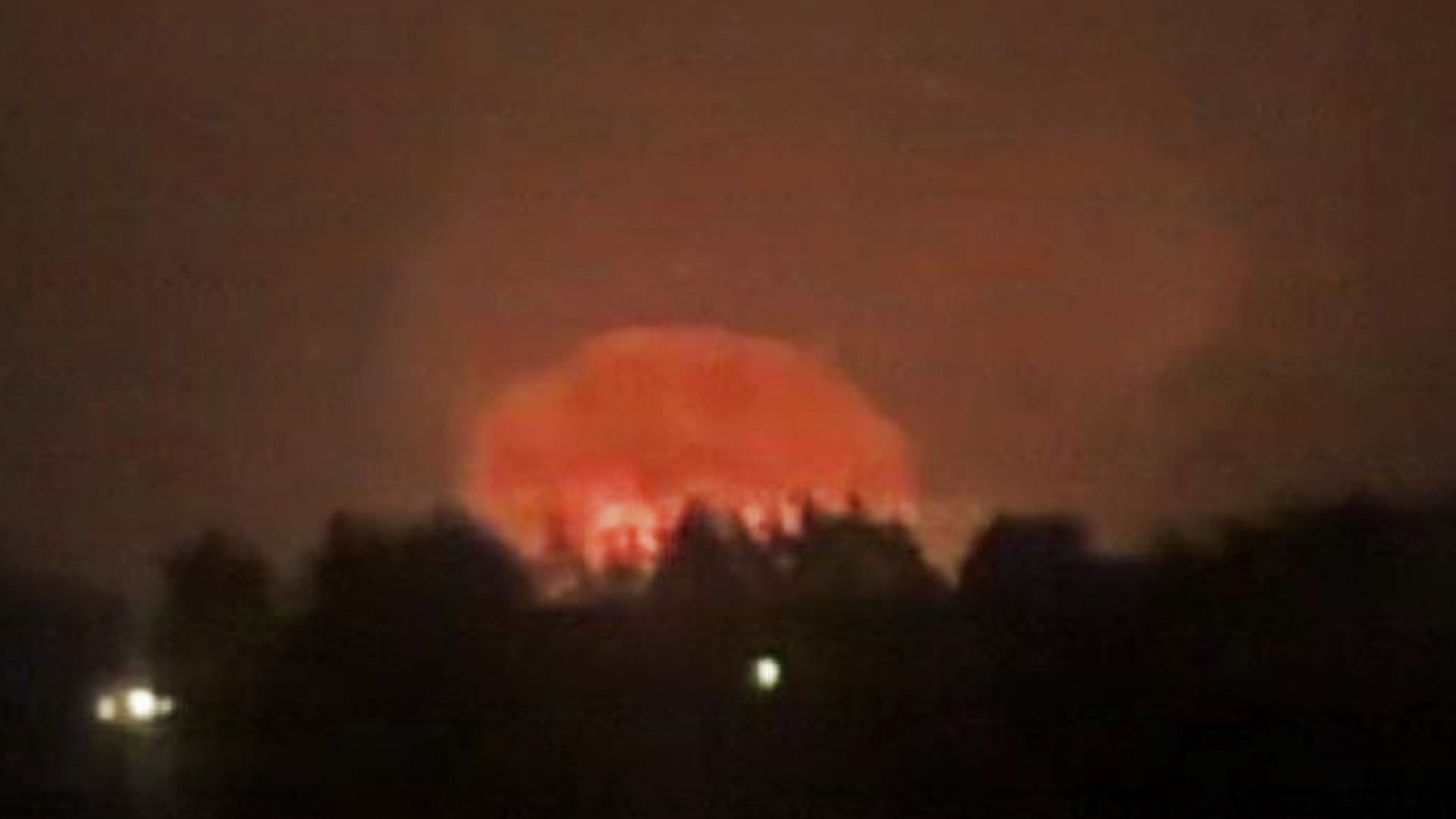Ukraine has used the U.S.-made Army Tactical Missile System (ATACMS) for the first time against a target inside Russia, according to U.S. officials, as well as military sources in Russia and Ukraine. The confirmation comes soon after Moscow warned that the use of Western-supplied long-range missiles by Ukraine against Russia could trigger a nuclear response after Russian nuclear war plans were updated.
The ATACMS strike is said to have targeted a munitions storage facility near the town of Karachev in the Bryansk region of western Russia, early this morning. The target is around 70 miles from the Ukrainian border. The ATACMS short-range ballistic missiles can hit targets up to about 190 miles away, while earlier variants feature a shorter range.
Videos showed a large fireball rising over the area, as well as the sounds of multiple smaller explosions, with the specific target said to be the 67th Arsenal of the Russian Main Missile and Artillery Directorate (GRAU).

“Indeed, this is the first time that ATACMS has been used to strike Russian territory. The strike was carried out on a facility in the Bryansk region, and it was successfully destroyed,” an unnamed Ukrainian military source told Ukrainian news agency RBC-Ukraine.
Another Ukrainian official confirmed the use of ATACMS, speaking to the Washington Post on the condition of anonymity.
Provided the Karachev depot was the target, this would suggest that indications Washington had limited the use of ATACMS to Russia’s Kursk region exclusively are erroneous — or otherwise that Ukraine decided to ignore that restriction. On the other hand, the Bryansk region does neighbor it and it’s almost certain that weapons stored in Karachev were being used to directly support the Russian counteroffensive in Kursk.
There are also reports that the facility was struck by drones, including from the governor of Karachev, who reported that eight Ukrainian drones were shot down. Local authorities also reported a drone attack, according to Astra Press, an independent Russian news outlet on Telegram.
A combined operation using ATACMS and one-way attack drones is certainly a possibility.
The attack was confirmed by Andriy Kovalenko, head of Ukraine’s Center for Countering Disinformation at the National Security and Defense Council. In a post on Telegram, Kovalenko said that the facility was used to store artillery ammunition, anti-aircraft missiles, air-to-ground guided weapons, and ammunition for multiple-launch rocket systems. He also said that drones were involved in the attack, apparently arriving ahead of ATACMS.
Meanwhile, the Russian Ministry of Defense also claimed that it had found debris from ATACMS missiles close to a military facility in the Bryansk region, further claiming that, from a total of six such missiles fired by Ukraine, five were brought down by Russian air defenses, and the other was damaged. The Russian Ministry of Defense said that a small fire had resulted from the attack but there were no casualties or significant damage.

These claims have not been independently verified, but, judging by the scale of the explosion seen in videos from the scene, the damage to the depot may well have been substantial.
So far, no videos or photos have emerged showing ATACMS fragments in Bryansk, either on social media or from official Russian channels.
This is not the first time that this munitions storage facility has come under attack, with at least three such raids having been reported since Russia’s full-scale invasion of Ukraine was launched in February 2022. In the past, there were also Ukrainian reports that the depot was being used to store arms delivered to Russia by North Korea.
Undated footage showing ATACMS in action in Ukraine:
As we reported previously, U.S. President Joe Biden only this weekend approved Ukraine’s use of U.S.-supplied long-range weapons to strike targets within Russia’s borders.
Yesterday, President-elect Donald Trump’s National Security Advisor nominee criticized the Biden administration for the policy shift, with Florida congressman Mike Waltz describing it as “another step up the escalation ladder.” You can read more about U.S. and Russian officials’ responses to the ATACMS decision here.
After the policy change was announced, Russia issued a series of threats, although talk of any kind of military response had been expressed in only vague terms.
Today, however, Moscow has said that the use of missiles like ATACMS against Russia could lead to a nuclear response, as part of a newly unveiled nuclear doctrine.
Speaking at his regular daily press briefing, Kremlin spokesperson Dmitry Peskov said Ukraine’s use of Western-supplied conventional missiles against Russia could be met by Russian use of nuclear weapons — although the kinds of targets were not specified.
Peskov said that the Kremlin considers the use of nuclear weapons to be an extreme measure, but that updating the doctrine was a necessary response to the current political situation.
The latest nuclear doctrine, which was formally approved by Russian President Vladimir Putin before the U.S. election earlier this month, features an expanded list of criteria that could warrant a nuclear response. They now include “aggression by any non-nuclear state, but with the participation or support of a nuclear country,” which would appear to be a very direct reference to Ukraine and its Western backers.

“In addition, a nuclear response from Russia is possible in the event of a critical threat to its sovereignty, even with conventional weapons, in the event of an attack on Belarus as a member of the Union State, [or] in the event of a massive launch of military aircraft, cruise missiles, drones, other aircraft and their crossing the Russian border,” the document added.
This is not the first time that Russia has issued nuclear threats within the context of the war in Ukraine. It has also undertaken tactical nuclear drills on its own territory and in Belarus. Earlier this year, leaked documents also appeared to indicate that Russia’s threshold for employing tactical nuclear weapons is significantly lower than previously thought.
Ammunition storage sites were among the likely ATACMS targets that we identified within Russian borders. This is especially true in the case of the versions of ATACMS with cluster warheads, which deliver hundreds of bomblets over a wide area, although the unitary warhead version would also be ideal for penetrating hardened bunkers in which weapons might be stored.
Other likely targets include airfields, logistics nodes, supply lines, equipment storage sites, and large gatherings of troops. Any of these — and more — may well be the next to be hit, while the attack on Karachev suggests that the next Ukrainian ATACMS strikes may well target areas outside of the critical Kursk region.
For Russia, the arrival of ATACMS strikes within its own borders is another headache. Already, the presence of these weapons in Ukraine has pushed back Russian airpower and at the same time put many more Russian air defense sites at risk. This same pattern will now be extended into Russia itself.
With much uncertainty ahead of Trump’s new presidency and the possibility that U.S. arms deliveries to Ukraine will be significantly reduced, or perhaps cut altogether, Kyiv is very likely to try and make the best use of its limited ATACMS stocks in the next two months.
Contact the author: thomas@thewarzone.com
